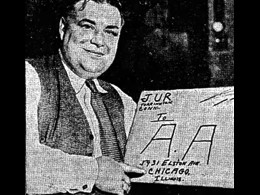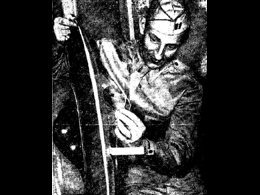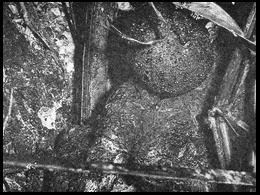July 11, 1947: Twin Falls UFO Hoax
The FBI, Army Intelligence, and police all responded to a report of the discovery of a "flying saucer" in the yard of Mrs. T.H. Thompson of Twin Falls, Idaho. The saucer was discovered by her neighbor who heard a "thudding noise" at about 2:30 am, ran outside, and found a large metallic disk on the lawn. The authorities spent a day trying to figure out what the object was, as townsfolk worried whether they were being invaded by extraterrestrials, before four teenage boys admitted they had made it as a prank. It had taken them several days to make the saucer which was replete with "a plexiglass dome, radio tubes, burned wires, and glistening sides of silver and gold."















